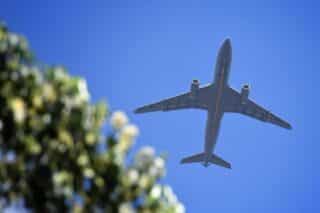CLARK FREEPORT—A new high-speed rail project in place of the suspended NorthRail linking the Ninoy Aquino International Airport (NAIA) and the Diosdado Macapagal International Airport (DMIA) here would cost about $2 billion, Transportation and Communications Secretary Manuel “Mar” Roxas II said here Tuesday.
“The estimate is $2 billion, which is a table-top estimate. The exact amount is uncertain in the absence of a detailed engineering design but the Chinese government said it is open to funding this,” Roxas said. He joined President Aquino in the groundbreaking rites here for the Philippine Academy for Aviation Training of Cebu Pacific and the Canadian aviation company CAE.
The preliminary cost of the proposed new rail is double the revised cost of the NorthRail, a report showed.
Roxas said talks between the Philippine and Chinese governments have been continuing since Chinese officials informed the government last year that it could provide bigger funding for a high-speed rail.
He said negotiations were ongoing for the “unwinding of the current contract” of Sinomach, the Chinese contractor of NorthRail.
“The point here is, which company has the expertise [to make a] high-speed [rail], different from the capacity of Sinomach. It will unwind and there will be a bidding to determine which company will build the high-speed [rail],” Roxas said.
What Sinomach has so far built from Caloocan City to the City of Malolos in Bulacan is only 10 percent of what was stipulated in the contract agreed upon during the administration of President Arroyo, he said.
In a report to the Subic-Clark Alliance for Development, North Luzon Railways Corp. said that as of July 2011, Phase 1, Section 1, of the NorthRail (31.93 kilometers from Caloocan to Malolos) was only 22.94-percent finished due to right-of-way and other claims.
“The original [contract required] a high-speed rail link. Sinomach has no experience [in doing this]. Zero, zero experience in rail construction, zero as in no knowledge. We were made a guinea pig. What it did, because it has no experience, is a commuter rail, which is slow. It’s not acceptable that it would take two hours to reach Clark. So we will have to change the specifications,” Roxas said.
This was why the timetable of the transfer of NAIA operations to DMIA would depend on the completion of the rail project, he said.
“We would have to coordinate all the infrastructure projects to ensure the success of [NAIA’s] transfer,” he said.
As for the new terminal at the DMIA in the Clark Civil Aviation Complex here, Roxas said the Aquino administration was studying whether the immediate priority was to expand the present terminal as a facility for low-cost airlines or to develop a larger, permanent terminal for DMIA’s development into the country’s leading international gateway.
Consultants from Japanese, Korean and Singaporean companies are preparing studies, he said.


